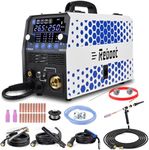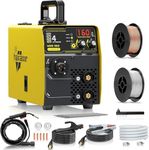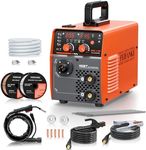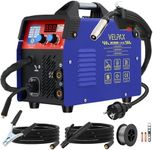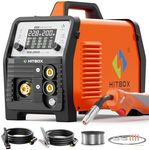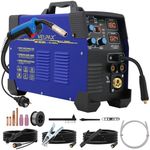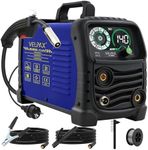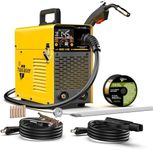Buying Guide for the Best Gasless Mig Welder
Choosing the right gasless MIG welder involves understanding your specific welding needs and matching them with the welder's capabilities. Gasless MIG welders are popular for their convenience and ease of use, especially for outdoor work or in windy conditions where shielding gas might be blown away. They use flux-cored wire, which provides its own shielding gas, making them ideal for beginners and hobbyists. When selecting a gasless MIG welder, consider the type of projects you plan to undertake, the materials you will be welding, and the environment in which you will be working.Amperage RangeAmperage range refers to the range of electrical current the welder can produce. This is important because different materials and thicknesses require different amperage levels for effective welding. Lower amperage is suitable for thin materials, while higher amperage is needed for thicker materials. When choosing a welder, consider the thickness of the materials you will be working with most often. If you plan to weld a variety of thicknesses, look for a welder with a wide amperage range to accommodate different needs.
Duty CycleThe duty cycle is the amount of time a welder can operate at a given amperage before it needs to cool down. It is usually expressed as a percentage of a 10-minute period. For example, a 20% duty cycle at 90 amps means the welder can run for 2 minutes at 90 amps before needing an 8-minute rest. A higher duty cycle is beneficial for longer welding tasks without frequent interruptions. Consider your typical project duration and choose a welder with a duty cycle that matches your work pace.
Wire Feed SpeedWire feed speed is the rate at which the welding wire is fed into the weld joint. It affects the weld quality and penetration. A consistent and adjustable wire feed speed is crucial for achieving smooth and strong welds. Beginners might prefer a welder with an easy-to-adjust wire feed speed to experiment and find the right settings for different materials and thicknesses. If you are new to welding, look for a welder with clear controls and guidance on setting the wire feed speed.
PortabilityPortability refers to how easy it is to move the welder around. This is important if you need to transport the welder to different job sites or move it around your workshop. Lighter and more compact models are easier to carry and store. Consider how often you will need to move the welder and choose a model that balances weight and power to suit your mobility needs.
Material CompatibilityMaterial compatibility indicates the types of metals the welder can effectively work with. Gasless MIG welders are typically used for mild steel, but some models can handle stainless steel and aluminum with the right setup. Consider the materials you plan to weld most frequently and ensure the welder you choose is capable of handling those materials. If you plan to work with a variety of metals, look for a versatile welder that can accommodate different wire types and sizes.
